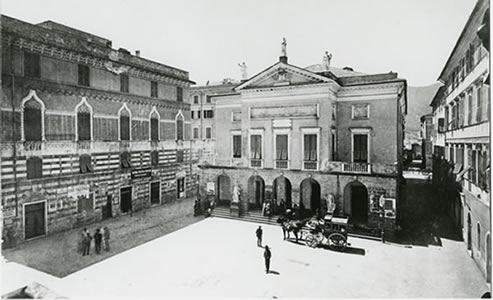Location and history of the museum
The Ethnographic Museum named after Giovanni Podenzana (1863-1943), is one of the most ancient departments of the La Spezia City Museum founded in 1873.
At the beginning, the museum collection (mainly natural history items such as shells, zoophytes, fishes and crustacean) was displayed in two rooms of the City Theatre. Later on, archaeological items, found during the building of the Naval Base, were added.
In 1887, the Museum Charter established that the aim of the Institution was to collect and preserve natural history, archaeological and historical items.
In 1875, the Museum was moved to a building in Corso Cavour and, in the following years, the collection was increased. In 1884, Giovanni Podenzana started to work as museum taxidermist; he became curator in 1891 and natural history department director in 1923. Since 1884, the Director was Davide Carazzi, physiologist and naturalist, which obtained a better place for the Museum: the ground floor of the primary school in via don Minzoni. Carazzi was succeeded by Ubaldo Mazzini and the Museum became highly renowned. During those years, Giovanni Podenzana started to build an ethnographic collection that was enlarged by other donations in the following decades.
In 1905, the Museum was moved inside the Crozza Palace in Corso Cavour. Immediately before the beginning of the Second World War, the City inaugurated a new building and started to move there the collections. Unfortunately, in 1943, the new Museum was bombed and part of the collection destroyed. After the war the Museum was again displayed in the Crozza Palace and, from 1975, in the building located in via Curtatone, 9.
In the 1990s, being Director Marzia Ratti, the city of La Spezia undertook museum renewal and the historical ethnographic collections were definitely displayed in the building once Oratory named after St. Bernardino from Siena.
 |
 |
 |
In the historical centre of the city of La Spezia, at the foot of the Poggio hill, on the street nowadays called via del Prione there was, in the 14th Century defensive walls, a gate: Porta Genova.
In 1445, near the Porta, an Oratory was built and it was named after St. Bernardino from Siena.
After 1812, the Oratory closed: from 1864, it was partially rebuilt and modified in order to host the City Council sessions and, from 1889, became headquarters of the Pubblica Assistenza.
The 19th Century renovation enlarged the building and included the small square, once between the Oratory and the Porta Genova.
Nowadays, when the visitor enters the Museum and crosses the reception, reaches the premises of the original church: it is a room covered with a barrel vaulted roof and eight lunettes aside connecting together in the middle of the roof.
At the end of the room, on an upper level, there are two smaller places, maybe a choir.
Nothing of the original building can be found on the first, second and third floor.
The last restoration took place in the year 2000 to reopen the building as a Museum.

